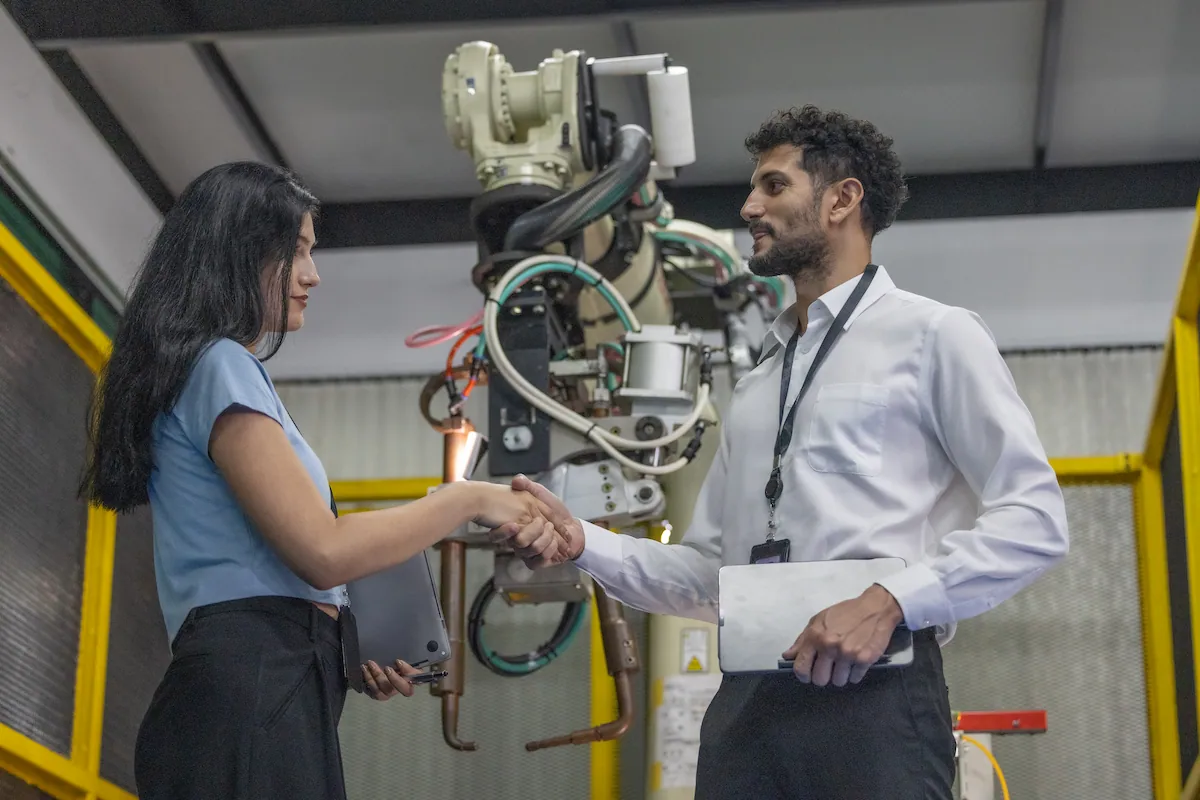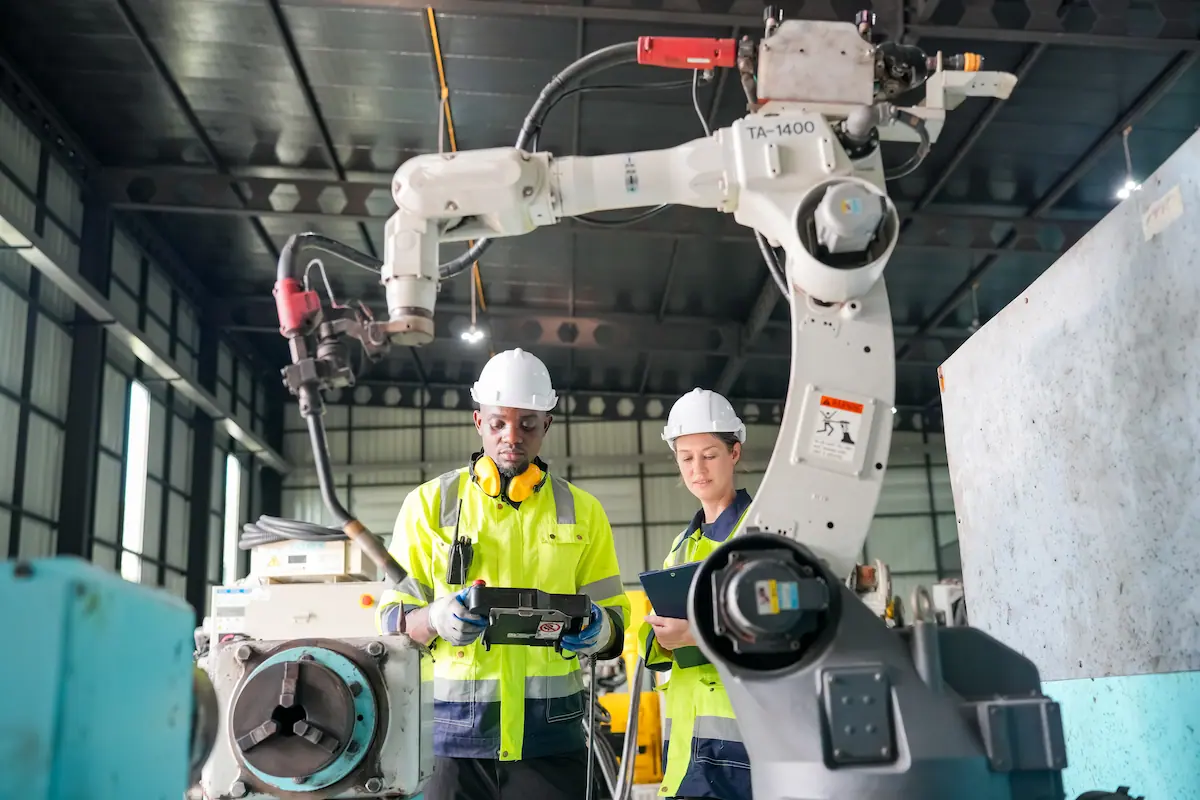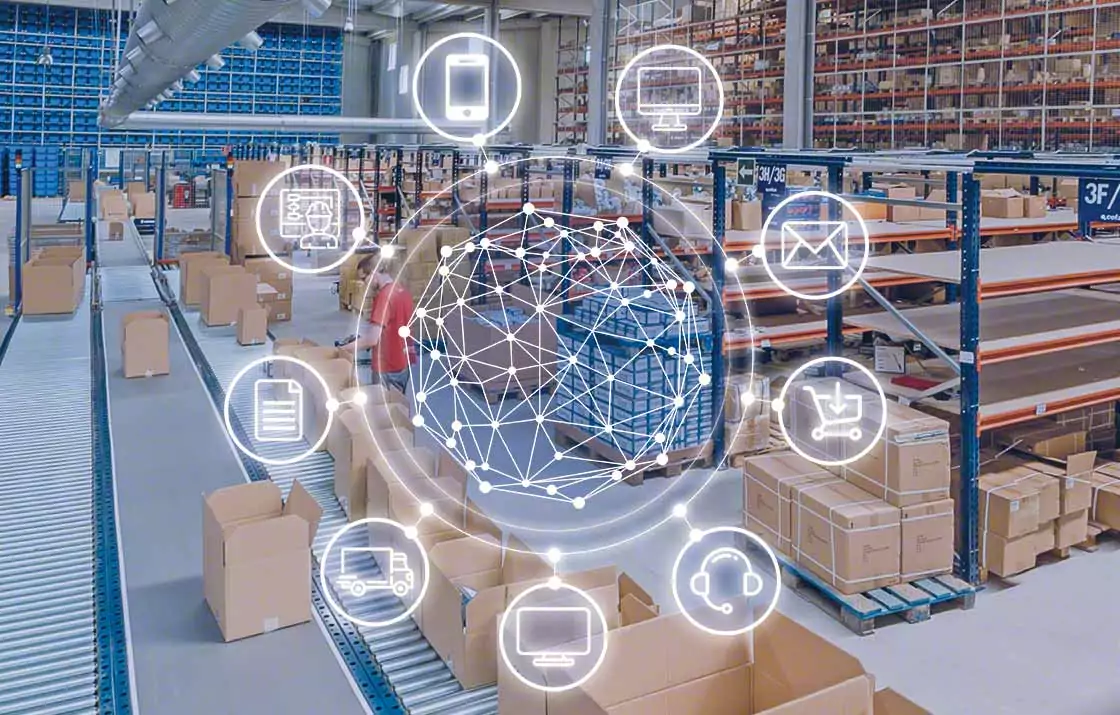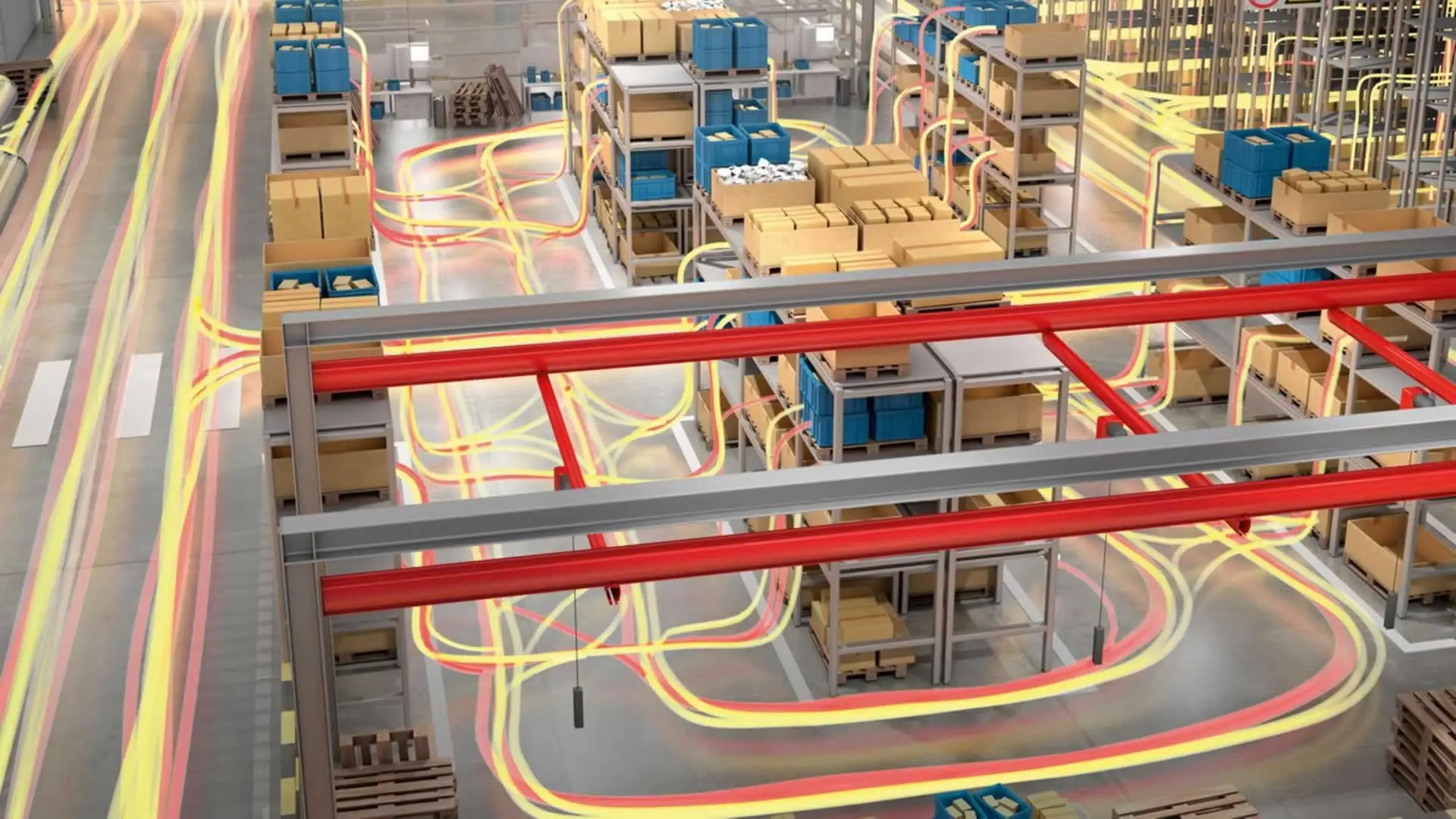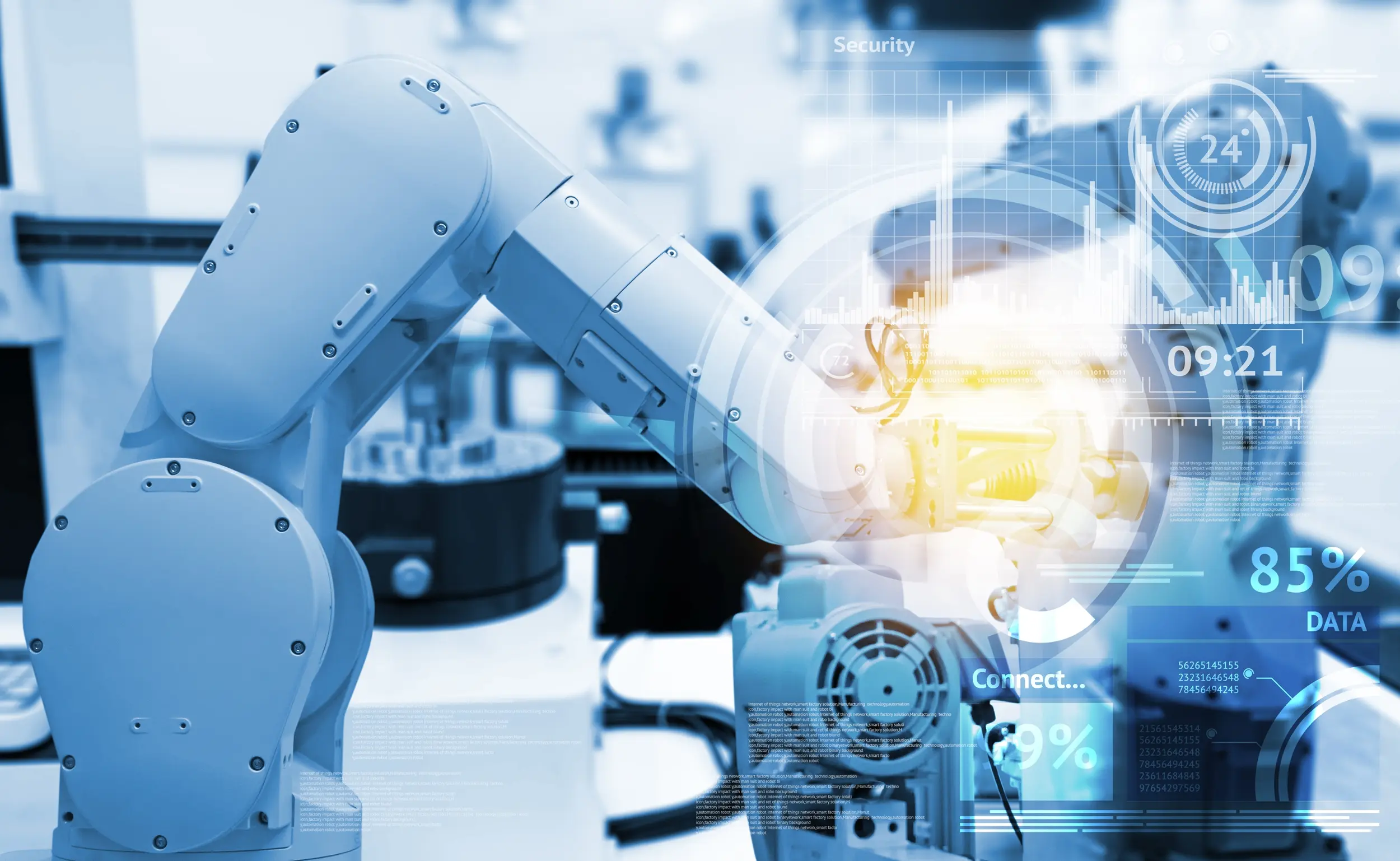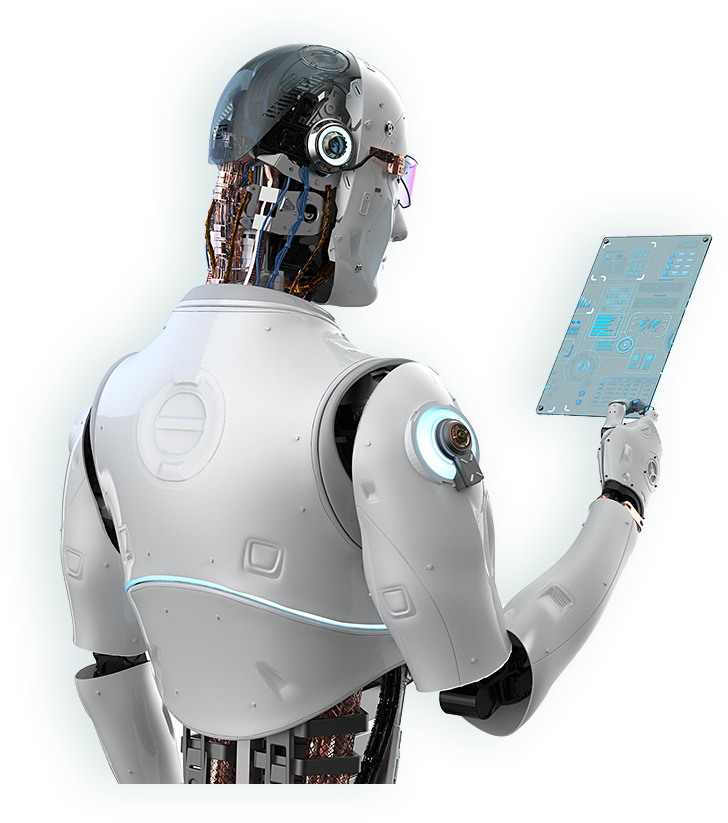Content index
ToggleIn recent years, the manufacturing industry has undergone an unprecedented transformation, driven by the advancement of digital technologies and the adoption of increasingly intelligent and connected production models. This phenomenon, often referred to as 'Industry 4.0', has seen the introduction of automated systems, Internet of Things (IoT), artificial intelligence and big data analytics, radically changing the way factories operate and produce goods.
In this rapidly evolving context, 'cobots' (collaborative robots) are emerging as the true protagonists of digital transformation in smart factories. Unlike traditional industrial robots, designed to operate autonomously and separately from humans for safety reasons, cobots are designed to actively collaborate with human operators. This ability to work side by side with people, sharing the same workspace, makes them particularly attractive to companies seeking to increase the efficiency, flexibility and safety of production processes.
Cobots are gaining popularity not only for their versatility and ease of use, but also for their ability to adapt quickly to different tasks. This operational flexibility is a crucial advantage in an increasingly dynamic global market where consumer needs are changing rapidly and mass customisation is becoming the norm. As a result, interest in cobots is growing exponentially in various industries, from automotive to electronics, from food to logistics.
But what exactly are cobots? How do they work and what benefits can they offer smart factories? To fully understand their impact on modern manufacturing, it is necessary to explore their distinctive features, practical applications and the competitive advantages they can offer.?
What are cobots?
Cobots, or collaborative robots, represent a new generation of industrial robots designed to work closely with humans in a safe and efficient manner. The term 'cobot' is derived from the fusion of the words 'collaborative' and 'robot', emphasising their ability to actively collaborate with human operators, sharing the same workspace without the need for protective barriers or safety cages.
Unlike traditional industrial robots, which operate in isolated environments to avoid accidents, cobots are designed to interact directly with people, integrating harmoniously into existing workflows. They are equipped with advanced sensors, such as force, torque and machine vision sensors, enabling them to detect human presence and dynamically adapt to their surroundings to avoid collisions.
One of the distinctive features of cobots is their operational flexibility. They can be easily programmed to perform a wide range of tasks, from material handling and the assembly of complex components to quality control and packaging. Moreover, thanks to artificial intelligence algorithms and machine learning, cobots can learn new tasks by observing human operators or through simple programming interfaces.
This ability to work in synergy with humans makes them particularly suitable for tasks requiring precision, adaptability and collaboration. For instance, in assembly lines, cobots can assist operators by lifting heavy loads or performing repetitive tasks, thus improving ergonomics and reducing human fatigue. Furthermore, their pinpoint accuracy ensures consistent quality in production processes, minimising human error.
Therefore, cobots are a key element in the evolution towards smart factories and Industry 4.0, offering companies the possibility to automate flexibly and efficiently, while maintaining human interaction and control over the production process.
How do cobots work?
Cobots are designed to be extremely versatile and easy to programme, making them accessible even to operators without advanced programming skills. They use intuitive interfaces, such as touch-screen panels and 'drag and drop' programming systems, which allow movements and tasks to be defined by simply dragging and dropping icons. In some models, it is possible to 'train' the cobot by physically guiding the robotic arm through the desired task, which is then memorised and repeated automatically.
Thanks to machine learning technologies, cobots can adapt to new tasks by observing human operators or through simple changes in programming parameters. This learning capability allows cobots to be quickly reconfigured to perform different tasks, improving production efficiency and minimising downtime. For example, a cobot used for component assembly can be reprogrammed in minutes to perform quality control or packaging tasks.
Another fundamental aspect of the operation of cobots is their inherent safety. Unlike traditional industrial robots, which require protective barriers to ensure the safety of human operators, cobots are designed to work side by side with people in total safety. They are equipped with a range of advanced sensors, including force, torque and proximity sensors, that detect human presence and allow the cobot to dynamically adapt to its environment.
In the event of accidental contact with a human operator, the robots are programmed to stop immediately or to reduce the speed and force of movement, thus avoiding potential injuries. This functionality is made possible by sophisticated control algorithms that constantly monitor the force applied and the position of the robotic arm. In addition, some models are equipped with soft covers or rounded edges to further minimise risks.
The integration of machine vision systems enables cobots to recognise objects and people in the work area, improving the accuracy of operations and further enhancing safety. This advanced vision capability makes them particularly suitable for tasks requiring precision and adaptability, such as the assembly of electronic components or the handling of fragile materials.
In summary, cobots are based on a combination of ease of use, operational adaptability and advanced safety, features that make them an ideal solution for the smart factories of the future. Their ability to collaborate directly with humans, while maintaining high standards of safety and precision, represents a turning point in industrial automation and a step towards the harmonious integration of man and machine.
Benefits of cobots in smart factories
- Flexibility and adaptability: Cobots can be easily reconfigured to perform different tasks, adapting quickly to changes in production lines. This enables companies to respond more agilely to market needs.
- Increased productivity: Working side by side with human operators, cobots improve the efficiency and speed of operations, reducing cycle times and increasing overall production capacity.
- Cost reduction: The implementation of cobots entails lower costs than traditional industrial robots, both in terms of purchase and maintenance. Moreover, due to their ease of programming, staff training costs are significantly reduced.
- Improvement of safety at work: Cobots are designed to work safely alongside humans, reducing the risk of accidents at work. Thanks to advanced sensors, they can detect obstacles and stop immediately in the event of danger.
- Consistent quality and precision: Thanks to their ability to perform repetitive tasks with high precision, cobots ensure consistent quality in production processes, reducing human errors.
Practical applications of cobots
Cobots are finding use in a wide range of sectors, from automotive manufacturing to electronics, from the food industry to logistics. Some examples include:
- Assembly: Cobots can perform assembly operations with high precision, working together with human operators to speed up the production process.
- Packaging and Palletising: Thanks to their flexibility, cobots can handle packaging and palletising operations quickly and efficiently.
- Inspection and quality control: Equipped with advanced vision sensors, the cobots can perform visual inspections to ensure high quality standards.
- Handling of hazardous materials: In risky work environments, cobots can perform hazardous tasks, protecting the safety of human operators.
Conclusion: the future of cobots in smart factories
Cobots represent one of the most promising technologies for the future of the manufacturing industry. Their ability to work in synergy with humans, combined with flexibility, efficiency and safety, makes them an ideal choice for the smart factories of the future.
As artificial intelligence and automation continue to evolve, cobots are expected to play an increasingly central role in optimising production processes. Investing in this technology will not only improve the competitiveness of companies, but also contribute to a safer, more collaborative and productive working environment.

